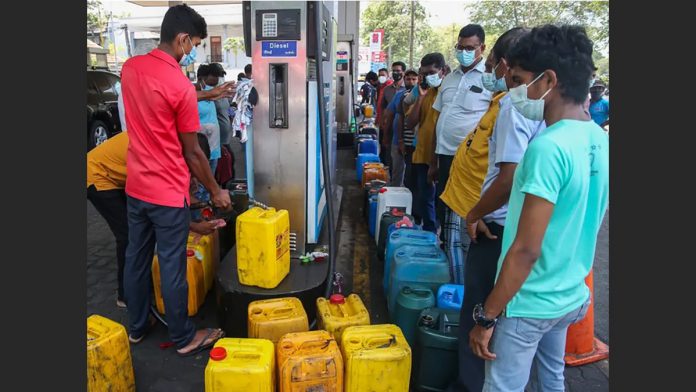COLOMBO, Sri Lanka – Instead of going to school, 12-year-old Susil Michael is guarding her family’s car at a gas station in Sri Lanka’s capital.
Her sisters and parents are all taking turns. They’ve been waiting in line to fill up their gas tank for four days, sleeping in their car. They’re not actually allowed to refuel for another day – Sri Lanka has implemented a gas rationing system based on license plates, similar to what parts of the United States did in the 1970s oil crisis – but the Michael family lined up early. There are thousands of cars and rickshaws in front of them.
“I don’t like it. It’s exhausting. It’s hot and we can’t afford food,” Susil says.
Lots of countries are dealing with rising prices. Sri Lankans are among those suffering the most. Inflation in the Indian Ocean island nation now tops 60%. Food prices have nearly doubled. There are rolling blackouts, food shortages and political unrest.
Sri Lanka was once a prosperous place
It’s a sad turnaround for a country that until 2020 had been classified by the World Bank as an “upper middle income country.” It was relatively prosperous, with nearly double the gross domestic product per capita of its neighbor India.
“Sri Lanka is going backward, because of those who have stolen our money,” says Susil’s father, Christopher Michael, an office temp worker who is 61. “Why did you mismanage the country?”
He blames the Rajapaksa family: Mahinda Rajapaksa was Sri Lanka’s president from 2005 to 2015 and also served as prime minister three times – most recently, until May. His brother Gotabaya Rajapaksa was president from 2019 until last month.
Both brothers recently resigned their posts (Mahinda in May, Gotabaya in July) amid massive public protests accusing them of mismanaging the country’s finances and driving its economy into the ground. (Sri Lanka’s tourism-fueled economy was also devastated by a 2019 terror attack and the COVID-19 pandemic.)
Last month, protesters occupied the presidential palace – swimming in its pool, cooking meals in the kitchen – and then allegedly set fire to the prime minister’s residence. (Politicians had evacuated before the demonstrators got there, and no one was hurt.)
After Gotabaya Rajapaksa fled to Singapore last month, the country got a new president – veteran politician Ranil Wickremesinghe. He has the difficult task of trying to negotiate a bailout from the International Monetary Fund. But he’s already unpopular and beleaguered. (Wickremesinghe’s office has not responded to multiple requests by NPR for an interview.)
On Wednesday, Wickremesinghe gave his first presidential speech to parliament, in which he promised to meet some of the protesters’ demands: to amend the constitution to limit his own powers, and form an all-party government. He did not specify a timeframe.
The fuel line as the great leveler
As darkness falls over Colombo, thousands of people prepare to spend yet another night sleeping in their cars, waiting for fuel. But one recent evening, a cheer goes up through the crowd at one gas station. The street lights have just flashed on, after a blackout that lasted hours. People erupt in celebration.
“Irrespective of your social status, irrespective of your income level, you have to stand in the queue. It’s unifying!” says W.A. Wijewardena, former deputy governor of Sri Lanka’s central bank.
The former bank official himself recently spent 50 hours in line to buy 20 liters of gasoline.
“Nobody knew who I was, and therefore they freely spoke to me. We shared food also! Because when you stand in the queue for 10 hours, it’s a unifying element!” Wijewardena says. “There are many different people.”
Across Sri Lanka, there are many different people waiting in line for gas. They’re also waiting for solutions to a crisis that’s brought their country to its knees. And many fear that wait could last several more months, or even years.













